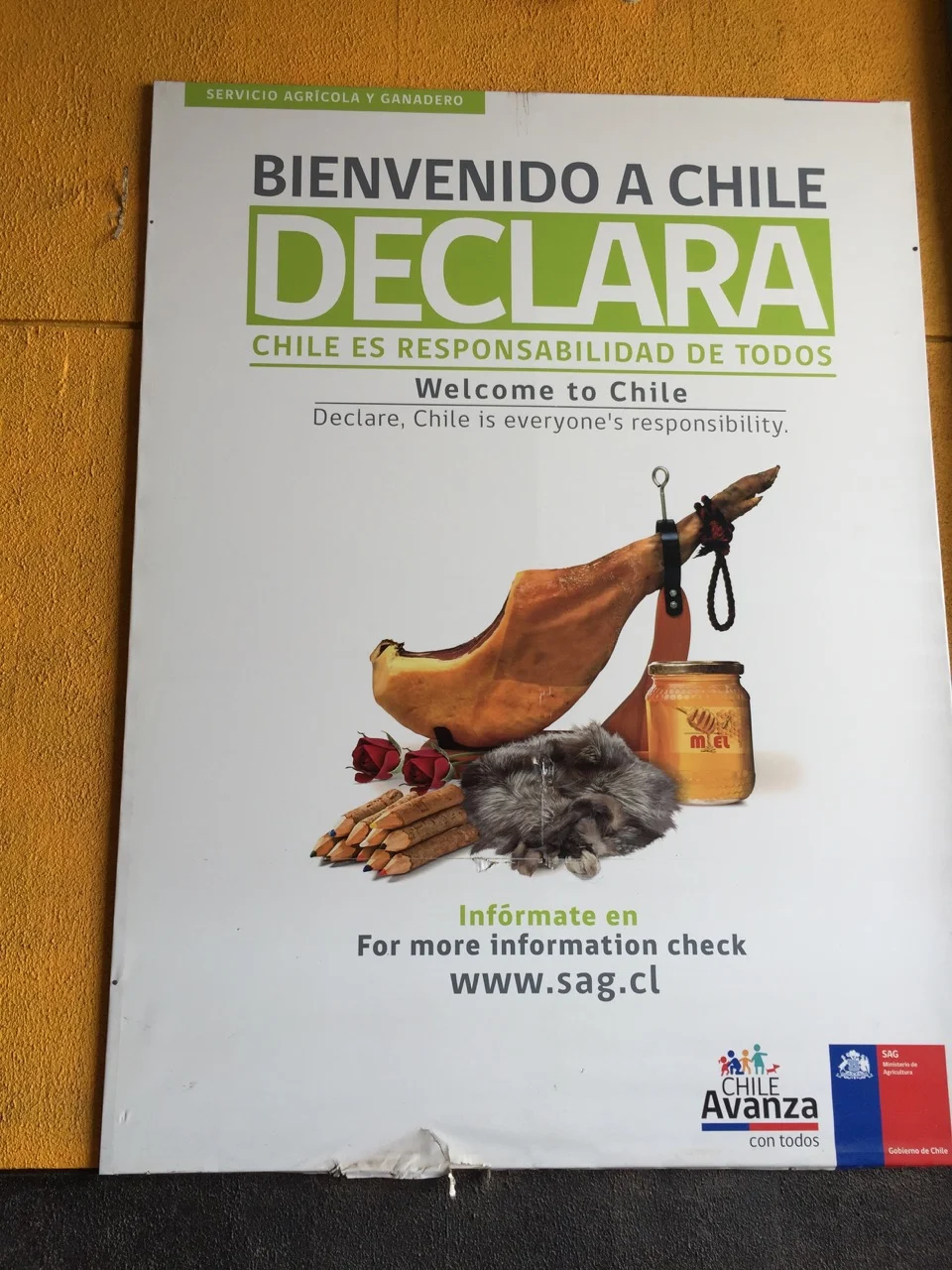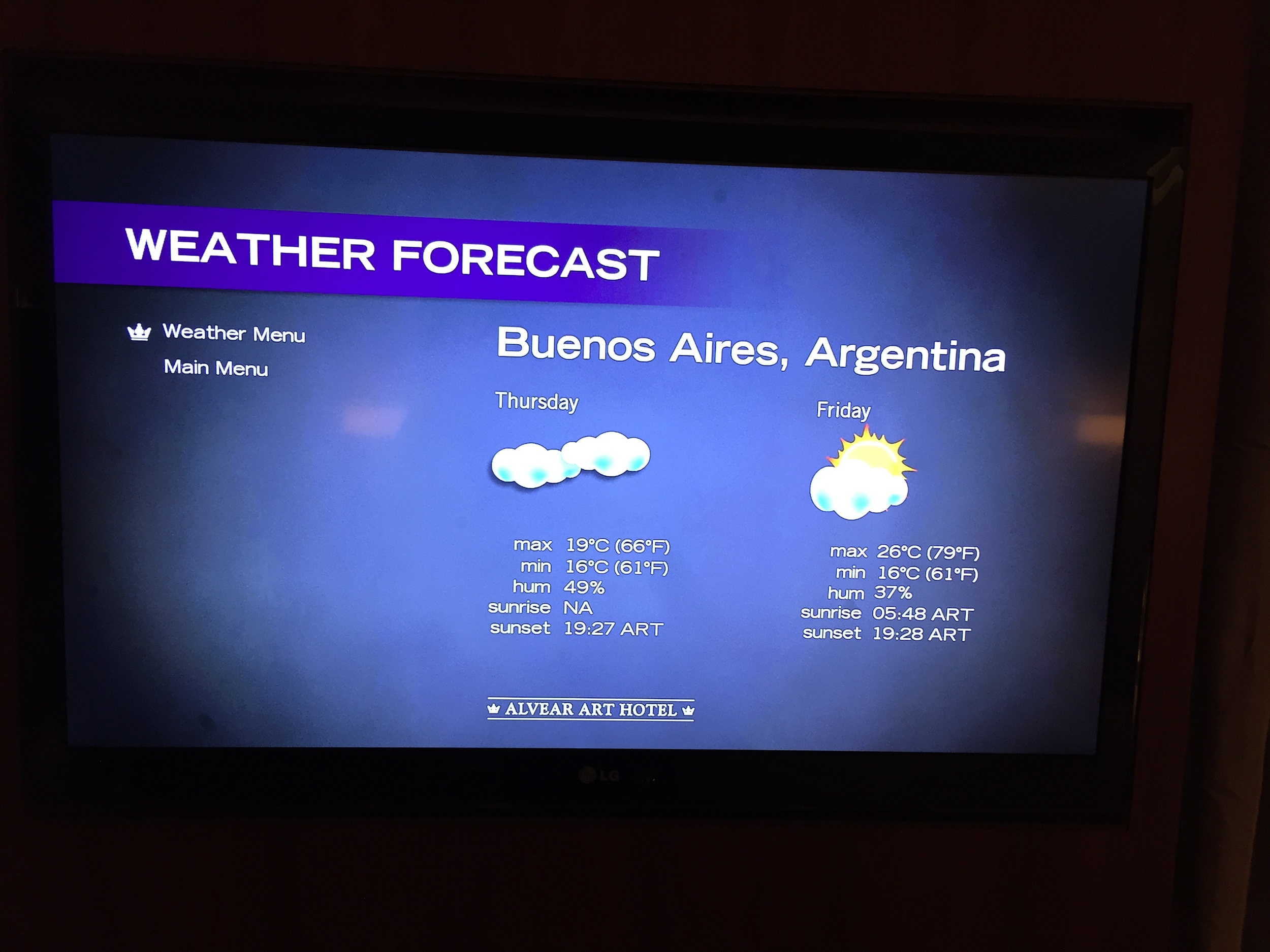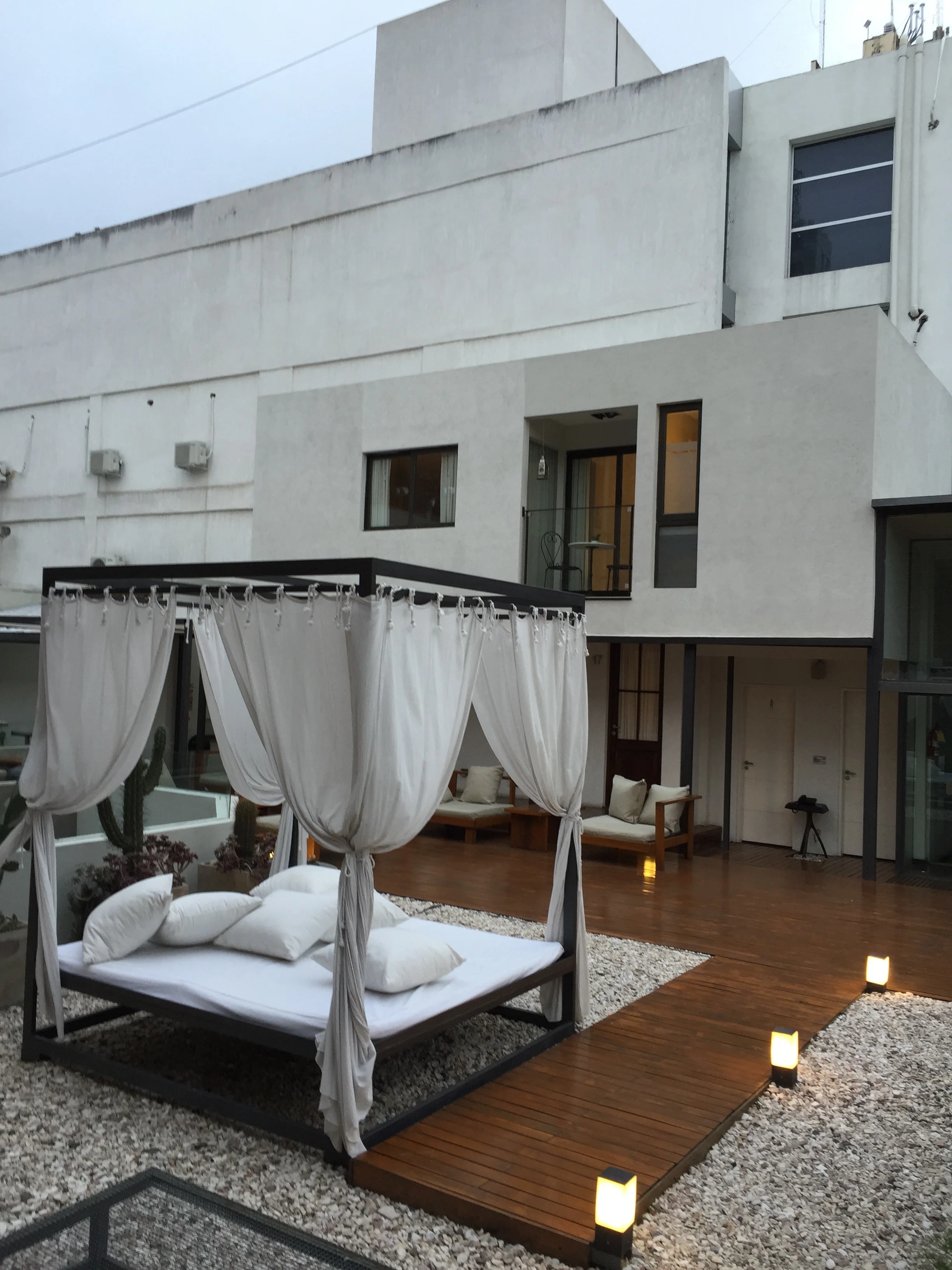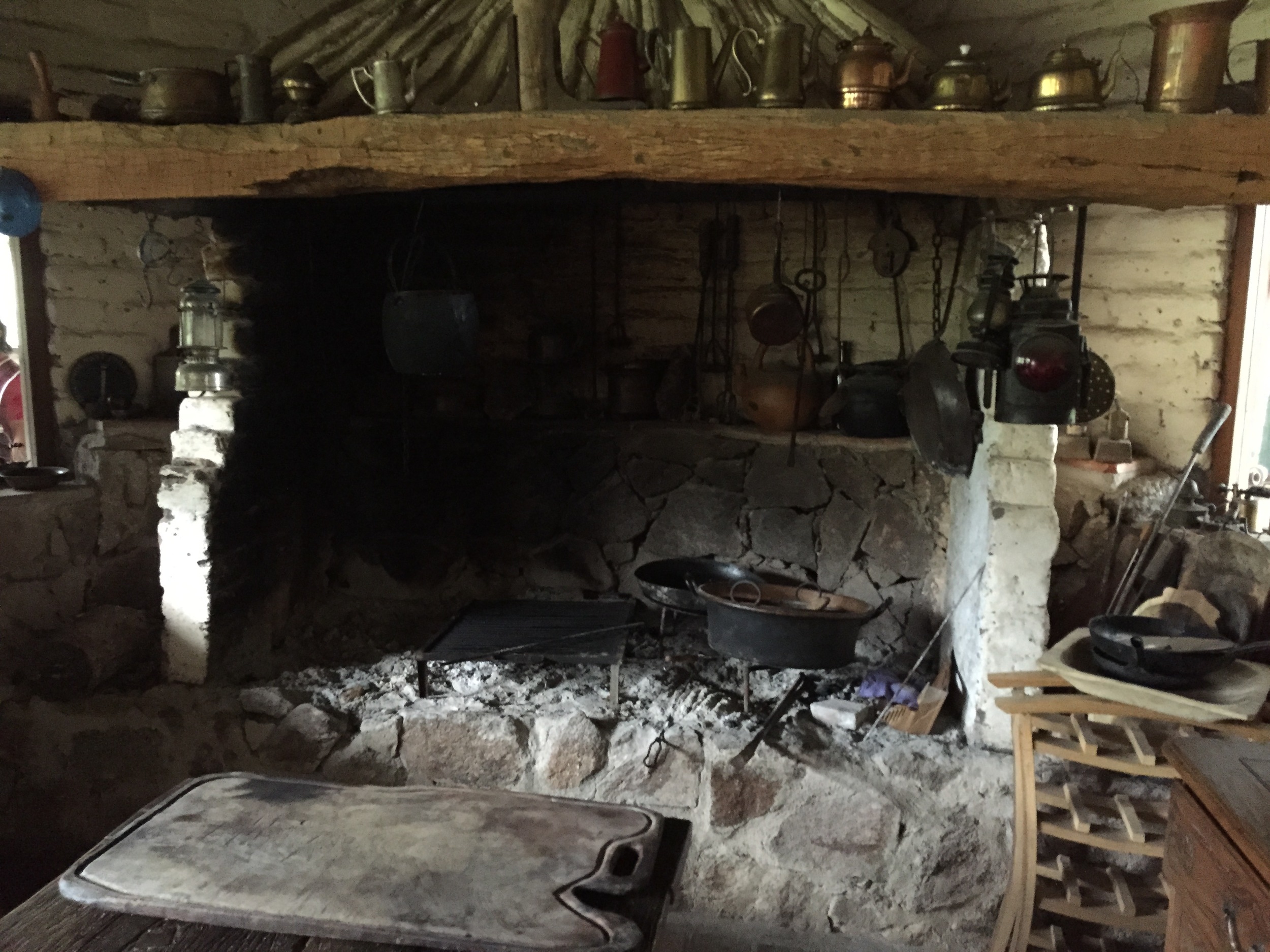Argentina Revisited - November, 2015
Misti and I just completed a three week trip to Argentina which included a few days in Uruguay and Santiago, Chile. This was our third trip to Argentina, the first in 1998 and the second in 2007.
Days at home were getting shorter, weather cooler and we were itching for a trip. Europe was cold and we had recently gone to Asia and Australia, so we looked south. It was the beginning of summer in Argentina and we’d have five hours more daylight which is great since I seem to get SAD (Seasonal Affective Disorder) as the days get shorter. Also, we learned online that because of Argentina’s severe fiscal problems the dollar brings a sixty percent premium.
It was just before the Argentinian presidential election and we saw posters everywhere of the two candidates. Scioli who was on the left and affiliated with what was the current left-leaning Kirschner administration (a holdover from Juan Peron days). His opponent was Macri, the “new guy”, a conservative businessman and mayor of Buenos Aires.
People seemed disillusioned with the current administration. With an inflation rate of thirty percent, high unemployment and runaway welfare programs, people wanted a change. The election was held on November 22, four days after we left Argentina, and the results are historic. The conservative candidate, Macri won and now Argentina is the only South American country to have a conservative president. It will be interesting to see if he’s able to solve any of that country’s problems but don’t hold your breath waiting for that to happen.
In our previous trips to Argentina we explored the southern and northern parts of the country. We hadn’t seen the central portion including Cordoba, the second largest city, so that was our focus.
We flew into Buenos Aires, one of our favorite cities in the world, which many consider to be the Paris or New York of Latin America and its European roots are quite evident. It’s an exciting city with a bustling population of four million, grand boulevards, plazas and parks everywhere and in the Latin manner nightlife begins late and goes through the night. On our last visit we spent several hours in Recoleta Cemetary where famous and infamous political and military dignitaries, including Eva Peron (Evita) are buried. Our second pass through this time, on a Sunday when it was very crowded, was every bit as interesting as the first visit.
Buenos Aires has many top notch restaurants which compete with the best the world has to offer. Using the internet and recommendations from our hotel concierge we had some memorable dinners. The five hour time difference between California and Argentina put us on a late dining schedule, but we were still always the first to arrive at restaurants which opened at eight or nine PM. That worked well since we always got the best table and attentive service.
Being in Argentina with the exceptionally strong US dollar was a big plus. There is what they call a “blue market” for money exchange (like a black market). Because they’re expecting a currency devaluation after the presidential election everyone was rushing to trade their pesos for US dollars.
The exchange rate (or “cambio”) changed every day and was headline news in all the newspapers. The official exchange rate at banks, ATM’s, or for credit cards was 9.5 pesos to one dollar. The rate we usually got was 15, so 100 dollars gave us 1500 pesos rather than 950 at the official rate. That’s a sixty percent discount which makes traveling in Argentina a real bargain. We never used a credit card, ATM or went to a bank. We got pesos at hotels, restaurants and on the street and knew to bring hundred dollar bills which commanded the best rate. We paid for everything, including hotels and car rental, with our discounted pesos bought with our strong dollars. The largest peso bill is one hundred (about seven dollars) so our pockets were always bulging with peso notes.
We stayed four nights in Buenos Aires at the Hotel Alvenear Arts in Recoleta. After four days of sightseeing, shopping and great dinners, we crossed the Rio Plato for a three day side trip to Uruguay, a country we had never visited. We spent the first night in Colonia de Sacramento, a quaint town with lots of cute shops, hotels and history, kind of like Mendocino in California. We then stayed two nights in Montevideo, the capital of Uruguay and a large city with lots to offer but not the magic of Buenos Aires. Misti found a boutique hotel in the historic part of town with a nice view over the Montevideo waterfront.
The highlights of our Montevideo visit were a great restaurant called La Fonda that Misti fell in love with; we ate there twice which we almost never do. The other was the changing of the guard at Plaza Independencia. Quite a spectacle with more than fifty Uruguayan soldiers in full dress uniform marching around the plaza with a military band. At one point they played the Uruguayan national anthem and the crowd sang along with the words, very moving. Small country but big ceremony.
In Montevideo our main interest was the same as in most other cities we visit: walking the streets, watching and talking with people, sitting in the many plazas and going into shops and restaurants. We like to absorb and “get the feel” of a city. We try to interact with the locals and usually have interesting experiences like street performances, demonstrations, flea markets, concerts - and that’s our entertainment. Easier in South America since our command of Spanish is quite respectable and people light up when you speak to them in their own language.
After Montevideo we ferried back to Buenos Aires where we spent another two nights, then rented a car and drove 200 miles to Rosario which is about half way to Cordoba, the second largest city in Argentina. We had seen most other parts of Argentina on our previous visits and Cordoba in the central part of the country piqued our curiosity. It’s not nearly as sophisticated as Buenos Aires but still offers plenty to see and do. There are many colonial buildings dating from the sixteenth century, some good museums, and of course, lots of good restaurants. Misti got us a great boutique hotel, Azur Real, and they upgraded us to the nicest room they had. One night we ate in an outstanding seafood restaurant called “La Chernia, El Chucho y La Cholga”. We thought this was an unusual name and guessed it was the names of the owners. Wrong. We asked and it’s the names of three local fish from the Parana River.
While the weather was generally quite mild with temperatures in the mid seventies, in Cordoba we did experience a “tormento” which is Spanish for storm. It was at night with lots of thunder and lightning and resulted in our staying a third night in Cordoba because many of the roads were too flooded to drive.
From Cordoba we drove several hours into the Central Sierras, an area somewhat similar to California’s Tahoe but on a more modest basis. We stayed two nights in the town of San Javier at a small bodega (in Argentina bodega means winery but the word is also used to mean a small store). Las Jarillas where we stayed was hidden away in the back country, very tranquil and picturesque with the mountains shrouded in clouds. The owner who had studied wine in Italy and France gave us a private tour and we tasted his excellent reds which were inexpensive (six dollars a bottle) and we thought as good as many of California’s more pricey wines.
We reluctantly left the Central Sierras for the six hour drive southwest to Mendoza, which we had visited seventeen years ago and were anxious to see again. Mendoza lies on the eastern side of the Andes Mountains which separate Argentina from Chile. It’s become famous as a world-class wine region, with 1500 or so wineries and is noted for its Malbec vintage. Wine tasting wasn’t the primary reason for our visit; we had fond memories of Mendoza and it exceeded our expectations.
We spent three nights and I must say that next to Buenos Aires, it’s my favorite Argentinian city. It’s much smaller, but with its tree-lined boulevards and many plazas is a charming city. We stayed in a small hotel across from Plaza Chile just a few blocks from Plaza Independencia, the central part of Mendoza. We spent one day exploring the town and the next day drove to two wineries in Maipu. Being a Sunday many of the wineries were closed, but the hotel clerk told us about several that were open and with Misti’s trusty GPS, we went right to them.
At the first winery we met a young couple from Sydney who were bumming around Argentina by train and bus, we chatted with them and invited them to join us. They were thrilled that we had a car and when we arrived at the next bodega ten minutes later they said it took them four hours by bus to get to the winery where we met them. Knowing they had limited funds, I bought them lunch and then drove them back to Mendoza.
The winery was owned and run by a French couple who had migrated to Argentina many years ago and brought their winemaking skills with them. He spoke reasonably good English and was the winemaker; she was in charge of the tasting room and spoke almost no English so we communicated in Spanish with a bit of French thrown in. A fun and memorable experience.
We had planned to spend our last two nights in Santiago, Chile and fly home from there. That meant we had to get from Mendoza to Santiago, a distance of only about 150 miles by road but it meant crossing the Andes at the Paso Libertadores which reaches an altitude of 10,500 feet. Eight years ago on a previous trip to Chile we had made two Andes border crossings into and out of Argentina. We recalled the scenery as being breathtaking but the border crossings with immigration and customs were a nightmare. For that reason we decided to hire a car and driver in Mendoza for the nine hour crossing.
It was a good decision because the truck traffic was non-ending, there must have been ten thousand blind curves and the border crossing was much easier since the driver helped us fill out the forms and get in the right lines. He said he had been making the crossing for the past five years and knew the immigration and customs people. It was fun having our own Mercedes bus and driver for just the two of us.
The scenery was spectacular and even though it was close to summer, there was lots of snow and some glaciers. A highlight was lunch at the Hotel Portillo, a ski resort near the summit with a beautiful dining room. We felt like king and queen dining on excellent local seafood in this elegant hotel with no one else in sight, and our table having a magnificent view of the glaciers and thermal lake.
I liked Santiago a lot. It’s smaller than Buenos Aires but has a nice feel and flavor. It ‘s very cosmopolitan, has a big city feel but at the same time is very comfortable. I could easily have spent another week there, especially since it was light until almost nine pm. We stayed in the barrio (neighborhood) called Lastarria which has many nice restaurants, bars and hotels and is a good area for strolling. With Misti’s online diligence we got a great boutique hotel (we’re into boutique hotels these days) called Lastarria.
In Lonely Planet we learned about the Mercado Central which has scores of small restaurants serving mariscos and pescados (seafood), much like the seafood markets in Sydney and Fremantle, Australia. We liked it so much we made a return visit the next day. Outstanding seafood, very atmospheric, a fun experience and not expensive.
On another night we had dinner at a little tapas restaurant which was a touch of Spain. As in Madrid, we sat at the counter and had a bottle of good Chilean tinto (red wine) and several tapas. We met two British ladies- Jan and Ruth- and I had a spirited political conversation with Jan- she being an arch liberal and me being on the other side.
Our trip ended after two nights in Santiago, not nearly enough time. We returned home via Houston and since it was just a few days after the terrorist attack in Paris, airport security was more intense than ever. We have global entry which enables us to bypass regular U.S. immigration and customs, but with having to claim bags and go through Houston airport security, and only a ninety minute window, we barely had enough time to make our San Francisco flight.
While it was nice to come home, as it always is, I must say I miss the longer days and mild temperatures of an Argentine Spring.
Art Faibisch
November 28, 2015
































































































































